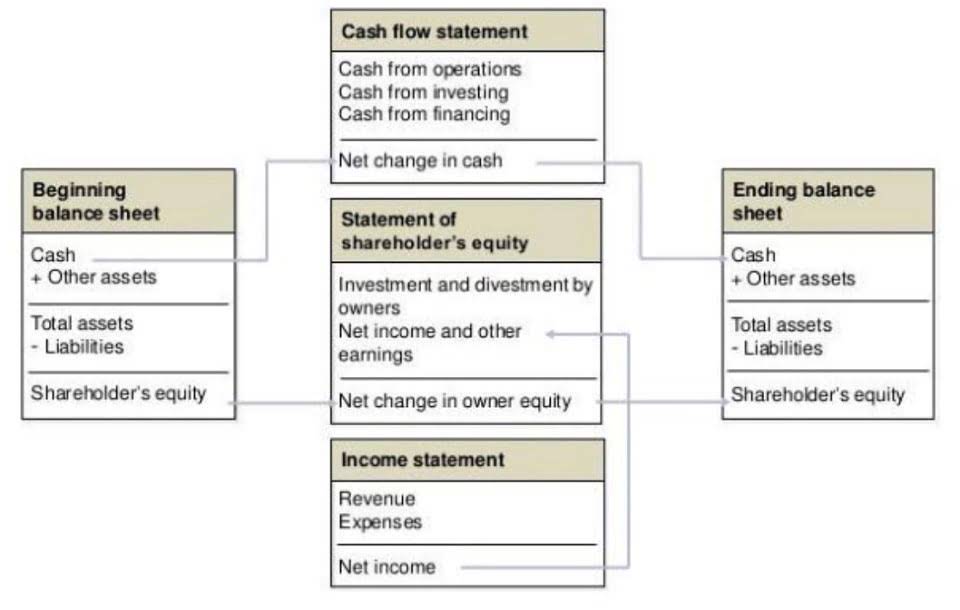
A company’s shareholder equity is calculated by subtracting total liabilities from its total assets. Shareholder equity represents the amount left over for shareholders if a company pays off all of its liabilities. To see how retained earnings impact shareholders’ equity, let’s look at an example.

Ask Any Financial Question
However, retained earnings are an equity balance on the balance sheet. This process adds the profits or losses to the retained earnings balance. When a company consistently retains part of its earnings and demonstrates a history of profitability, it’s a good indicator of financial health and growth potential.
Tune into Financial News

Retained earnings are the cumulative net earnings or profit of a company after paying dividends. Retained earnings are the net earnings after dividends that are available for reinvestment back into the company or to pay down debt. Since they represent a company’s remainder of earnings not paid out in dividends, they are often referred to as https://www.bookstime.com/ retained surplus. You can track your company’s retained earnings by reviewing its financial statements. This information will be listed on the balance sheet under the heading “Retained Earnings.” Retained earnings are usually considered a type of equity as seen by their inclusion in the shareholder’s equity section of the balance sheet.
- Established businesses that generate consistent earnings make larger dividend payouts, on average, because they have larger retained earnings balances in place.
- Now your business is taking off and you’re starting to make a healthy profit which means it’s time to pay dividends.
- The retained earnings are calculated by adding net income to (or subtracting net losses from) the previous term’s retained earnings and then subtracting any net dividend(s) paid to the shareholders.
- You can use this calculator to figure out your retained earnings account’s balance at the end of your accounting period.
- These programs are designed to assist small businesses with creating financial statements, including retained earnings.
- Though retained earnings are not an asset, they can be used to purchase assets in order to help a company grow its business.
Are Retained Earnings Considered a Type of Equity?
Yes, having high retained earnings is considered a positive sign for a company’s financial performance. Shareholders, analysts and potential investors use the statement to assess a company’s profitability and dividend payout potential. Retained earnings are also known as accumulated earnings, earned surplus, undistributed profits, or retained income. For example, during the period from September 2016 through September 2020, Apple Inc.’s (AAPL) stock price rose from around $28 to around $112 per share. During the same period, the total earnings per share (EPS) was $13.61, while the total dividend paid out by the company was $3.38 per share. The decision to retain earnings or to distribute them among shareholders is usually left to the company management.
- Finance Strategists has an advertising relationship with some of the companies included on this website.
- While you can reinvest retained earnings as assets, they are not assets on their own.
- The retained earnings calculation is essential for understanding a company’s ability to reinvest in itself, pay off debt, or fund its own growth without needing additional outside funding.
- Common accounting periods include monthly, quarterly, and yearly.
- Profits generally refer to the money a company earns after subtracting all costs and expenses from its total revenues.
- The amount designated for a particular purpose is classified as appropriated retained earnings.
It is calculated by subtracting all the costs of doing business from a company’s revenue. Those costs may include COGS and operating expenses such as mortgage payments, rent, utilities, payroll, and general costs. Other costs deducted from revenue to arrive at net income can include investment losses, debt interest payments, and taxes. Revenue and retained earnings provide insights into a company’s financial performance.
As an investor, one would like to know much more—such as the returns that the retained earnings have generated and if they were better than any alternative investments. Additionally, investors may prefer to see larger dividends rather than significant annual increases to retained earnings. For an analyst, the absolute figure of retained earnings during a particular quarter or year may not provide any meaningful insight.

Best Free Accounting Software for Small Businesses
Examples of these items include sales revenue, cost of goods sold, depreciation, and other operating expenses. Non-cash items such as write-downs or impairments and stock-based compensation also affect the account. The rest of the formula for retained earnings stays similar in this version. Companies can further expand these formulas by separating cash and stock dividends.
How are retained earnings different from dividends?
Observing it over a period of time (for example, over five years) only indicates the trend of how much money a company is adding to retained earnings. It involves paying out a nominal amount of dividends and retaining a good portion of the earnings, which offers a win-win. Deciding how to invest net income is an essential task for any small business owner and retained earnings can tell you how much you’re working with before you make any major investments. Or you can use retained earnings to pay off debts and take that stress off your shoulders.
- Conversely, when total liabilities are greater than total assets, stockholders have a negative stockholders’ equity (negative book value) — also sometimes called stockholders’ deficit.
- Retained earnings and revenue are both included on the company’s income statement and balance sheet.
- However, it also deducts dividends from those amounts before reporting them on the balance sheet.
- Any changes or movements with net income will directly impact the RE balance.
- Any factors that affect net income to increase or decrease will also ultimately affect retained earnings.
Resources for Your Growing Business
Revenue and retained earnings are crucial for evaluating a company’s financial health. The purpose of releasing a statement of retained earnings is to improve market and investor confidence in the organization. Instead, the retained earnings are redirected, often as a reinvestment within the organization. retained earnings is asset or liabilities The most common of these is the distribution of a stock dividend. The other is an action on the part of the board of directors to increase paid-in capital by reducing RE. The act of appropriation does not increase the cash available for the acquisition and is, therefore, unnecessary.
- The purpose of a balance sheet is to ensure all your bookkeeping journal entries are correct and every penny is accounted for.
- Retained earnings are recorded in the shareholder equity section of the balance sheet rather than the asset section and usually do not consist solely of cash.
- Retained earnings for a single period can reveal trends in the company’s reinvestment, but they don’t tell you how those funds are used, or what the return on investment is.
- Businesses can choose to accumulate earnings for use in the business or pay a portion of earnings as a dividend.
- Positive retained earnings signify financial stability and the ability to reinvest in the company’s growth.
- Most software offers ready-made report templates, including a statement of retained earnings, which you can customize to fit your company’s needs.
- Retained earnings represent a company’s accumulated profits or losses.